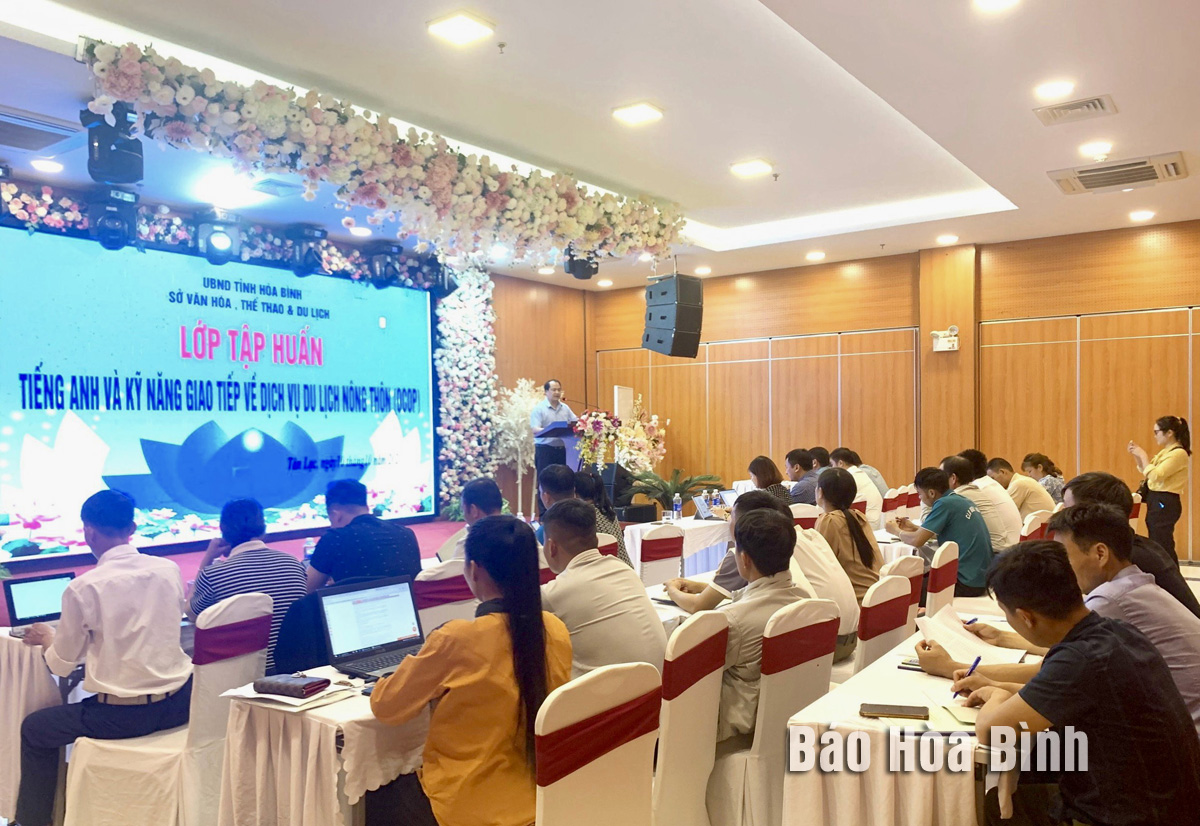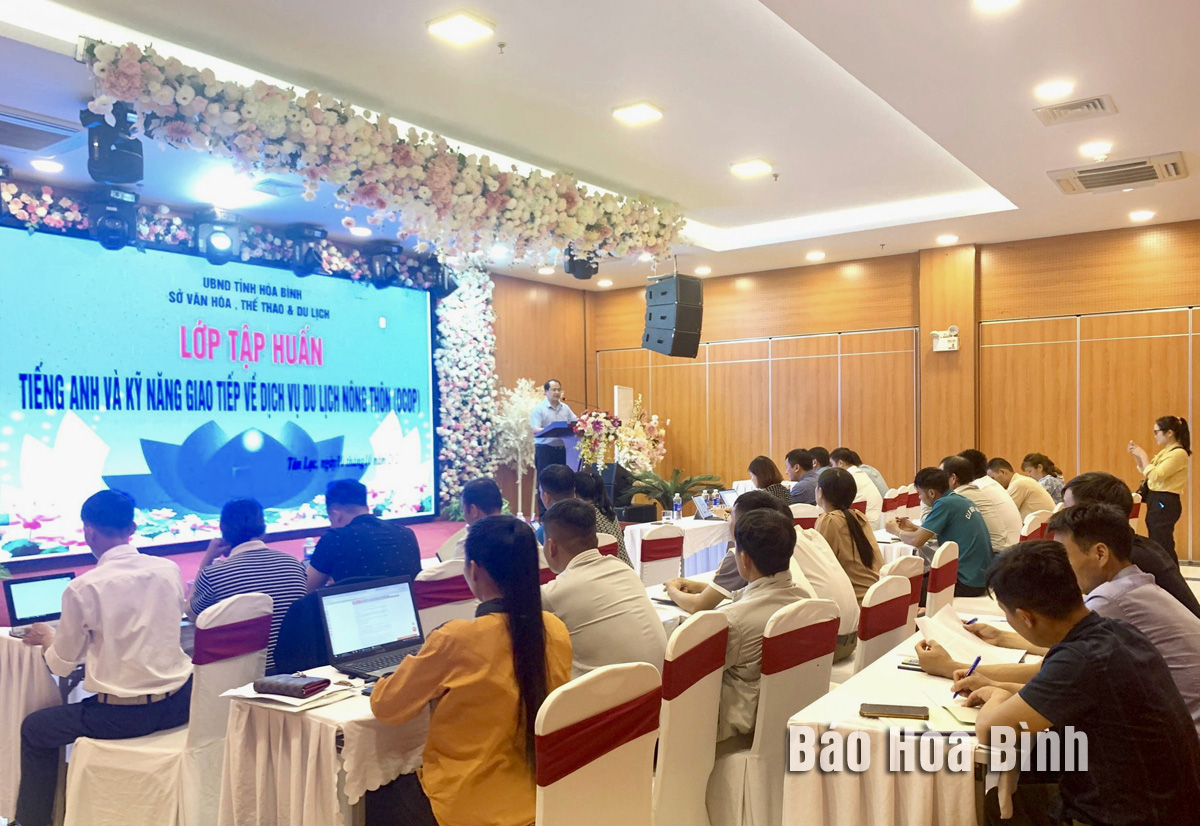
(HBO) - On October 10th, in Tan Lac district, the Department of Culture, Sports and Tourism organized a training class in English and skills on the rural tourism services (OCOP) in 2023 for 25 learners, who are the employees of the units, the individuals, the households, the tourism service cooperatives, the officials and social and cultural civil servants of Quyet Chien, Ngo Luong and Van Son communes.

The
Department of Culture, Sports and Tourism is opening a training class on
English and communication skills on the rural tourism services in Tan Lac
district.
Currently,
the program of the Rural Tourism Development in the construction of the new
rural areas is being actively implemented by the province. By 2025, one of the
specific goals of the program is that at least 70% of owners of the rural
tourism facilities will have been trained in tourism management skills; 80% of
the rural tourism workers will have been trained and improved their
professional skills and thew skills to serve tourists; In each tourism
destination there is at least 1 staff
member who is fluent in foreign languages.
Within
the framework of the training class scheduled to take place from October 10th – 17th, the officials and the employees of
the management units, the individuals, the households, the business
cooperatives doing the community tourism destinations throughout Tan Lac
district are equipped with knowledge of English and the basic skills of
communication and behavior in tourism service activities. Thereby, it helps
improving the expertise, the skills and the quality of human resources,
contributing to restructuring economy and career transformation for the
workforce at the locations with the potential for tourism development in the
form of community tourism, improving income and the living standards for the
local people. The training class has also created the conditions for the
learners to exchange and share tourism experiences, and at the same time they
can learn new ways to develop the local tourism.
Located just a 20-minute drive from Hoa Binh City, Ora Hill Farmstay & Glamping Hoa Binh is a captivating new destination nestled in Mo hamlet, Bình Thanh commune, Cao Phong district. Combining farming with leisure, this tranquil retreat is perfect for those seeking balance, joy, and an immersive experience in the expansive beauty of nature.
Muong Bi - Tan Lac is renowned as one of the four famous Muong regions in Hoa Binh province. Blessed by nature with a favourable climate and stunning landscapes, Tan Lac holds great advantages for tourism development. The local tourism industry has made remarkable strides in recent times thanks to the attention and support from the local authorities and sectors.
With its strategic location, well-developed transport network, and diverse soil and climatic conditions, Hoa Binh is emerging as a must-visit destination in Vietnam's northwestern tourism corridor. The province boasts numerous attractions, including the Kim Boi hot springs (Kim Boi district), the Dau Rong cave complex (Cao Phong), the Mai Chau valley (Mai Chau), and the iconic Hoa Binh hydropower plant.
The northern mountainous province of Hoa Binh has been listed among the 71 most beautiful places to visit worldwide by the prestigious US travel magazine Condé Nast Traveller.
Hoa Binh province’s rich natural and cultural resources position it as a prime location for developing community-based tourism (CBT). In recent years, support from central and provincial policies, as well as assistance from non-governmental organisations, have encouraged local ethnic minority and mountainous communities to actively engage in the sector.


